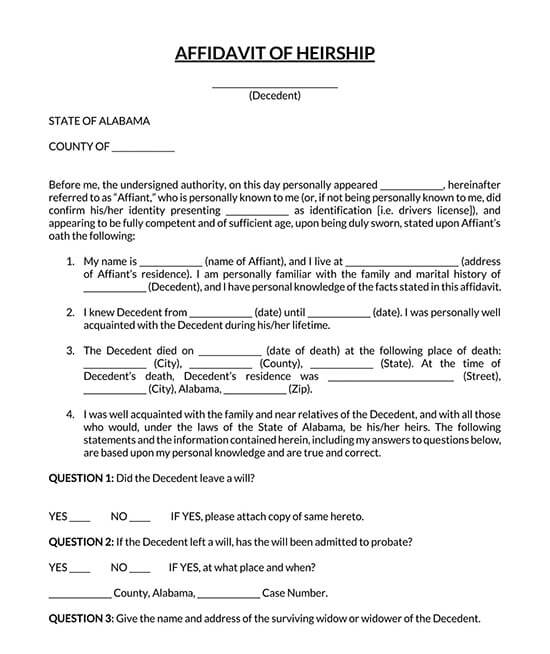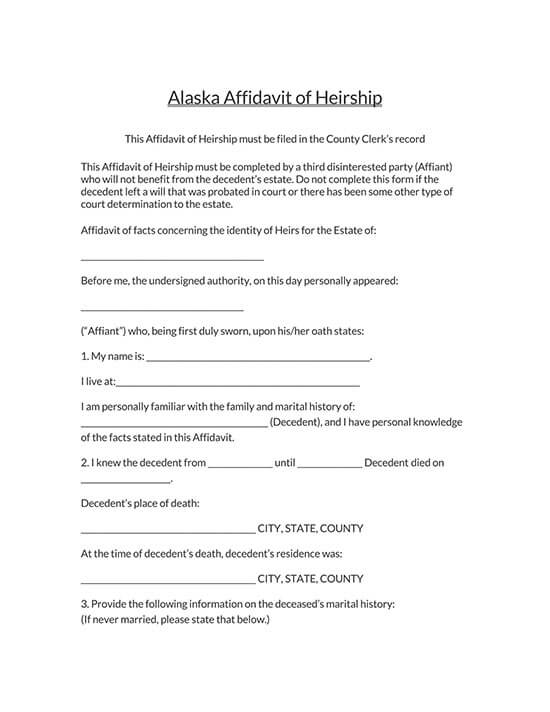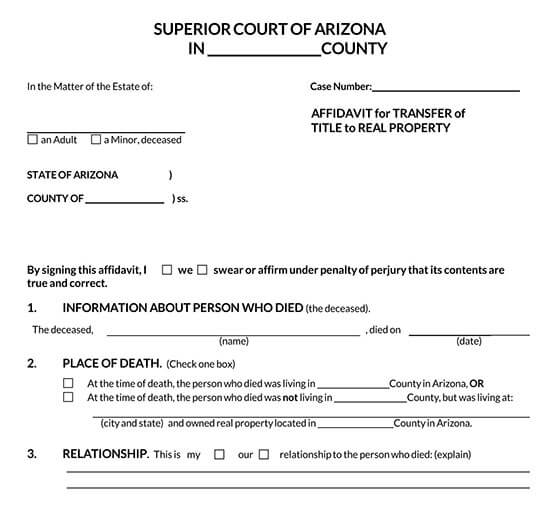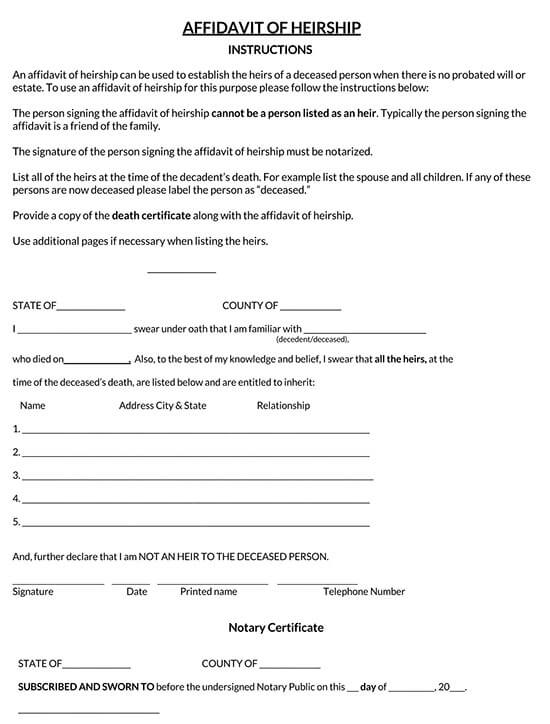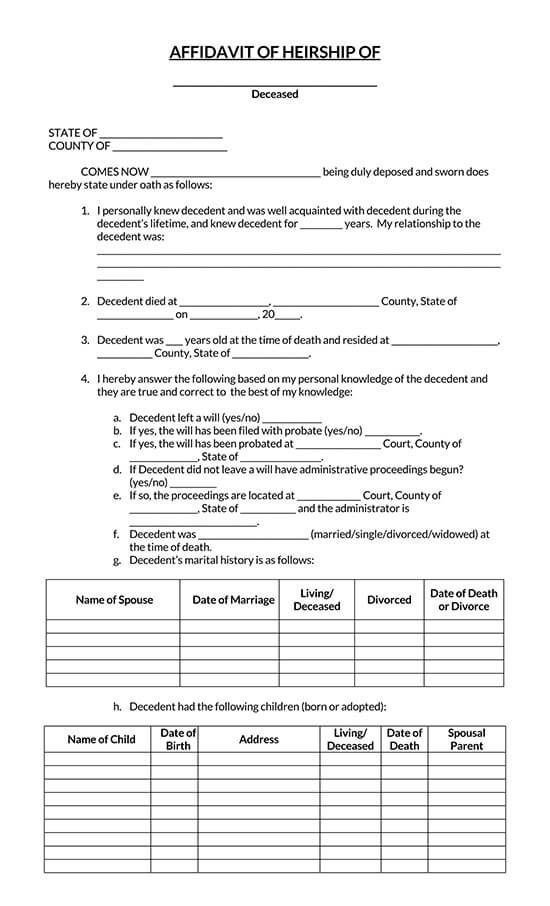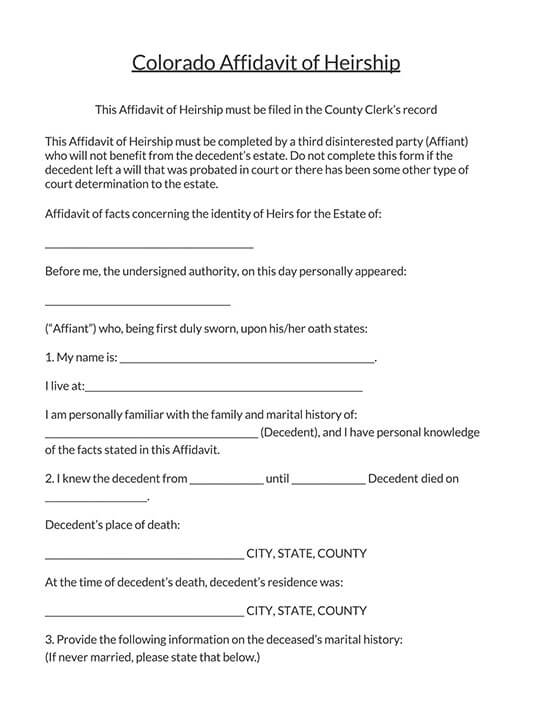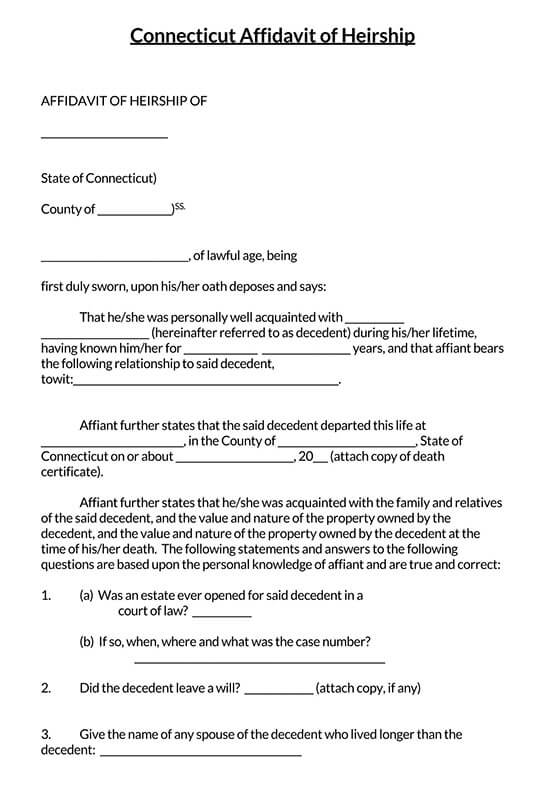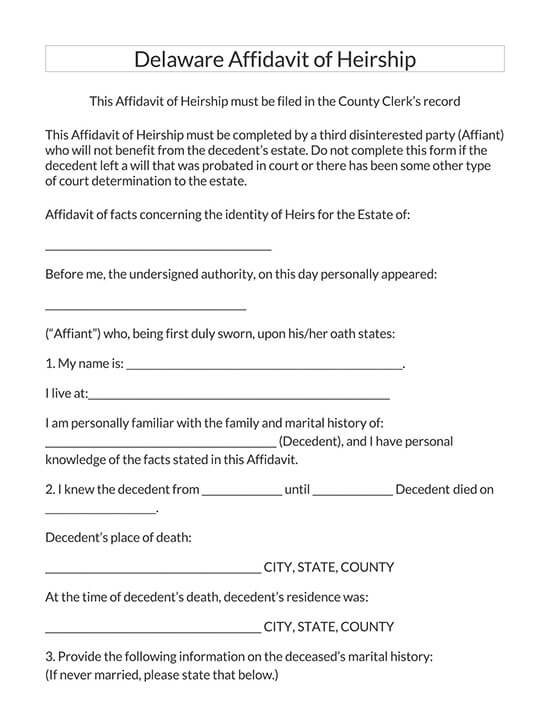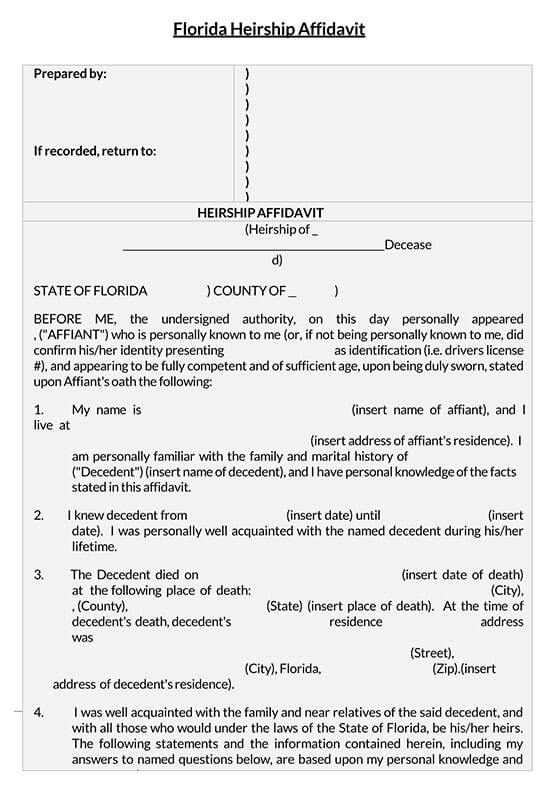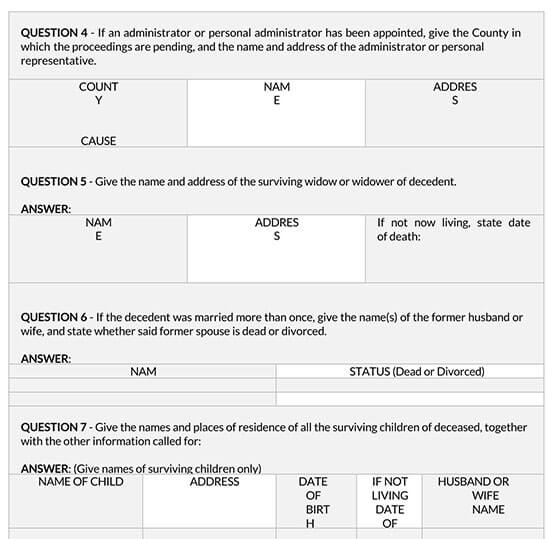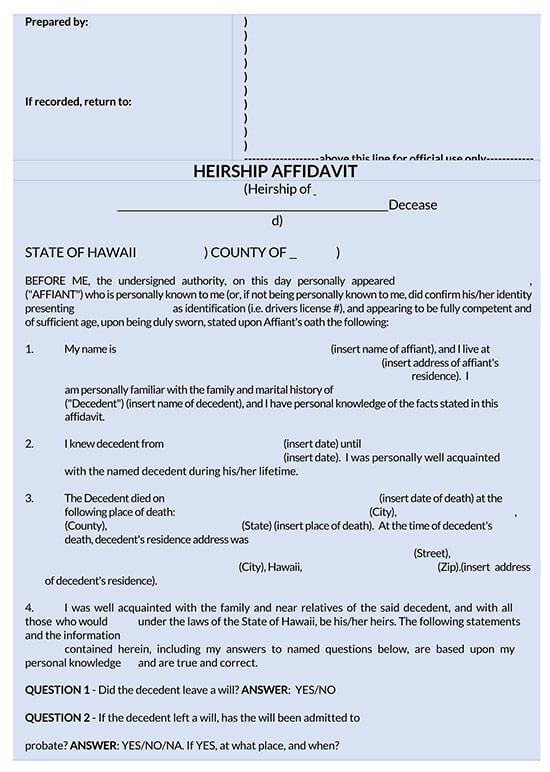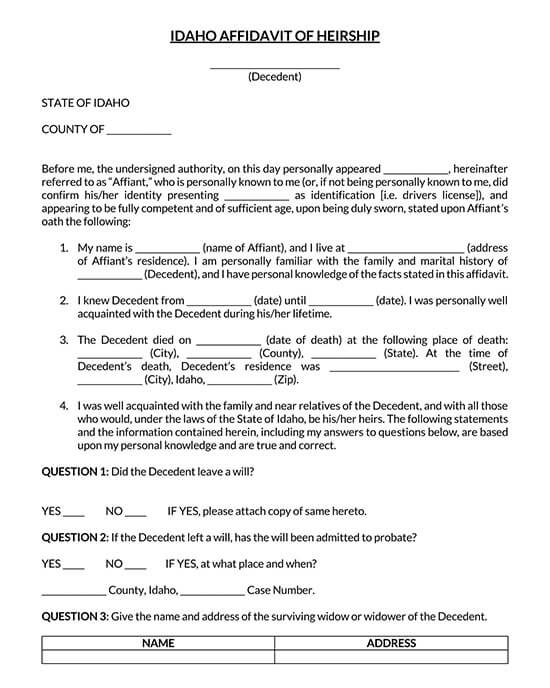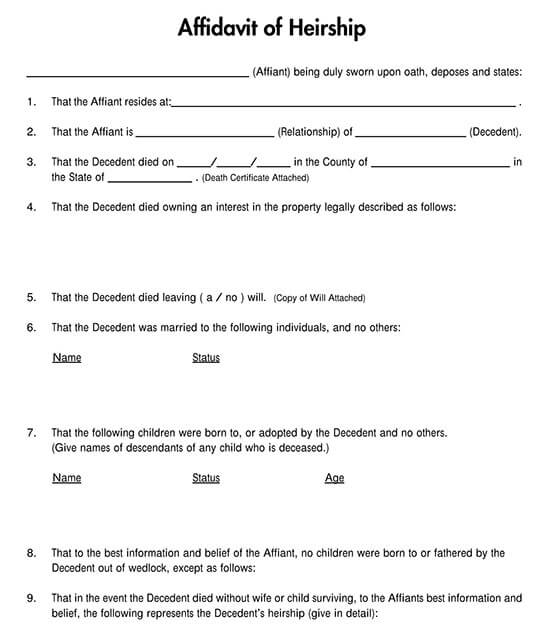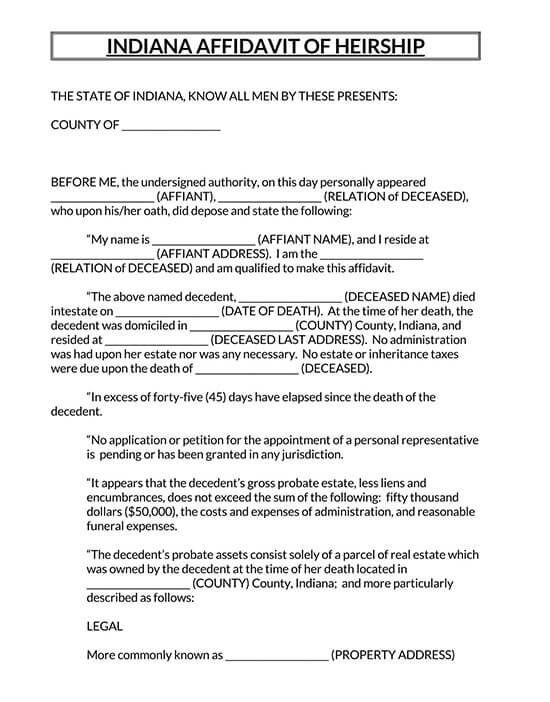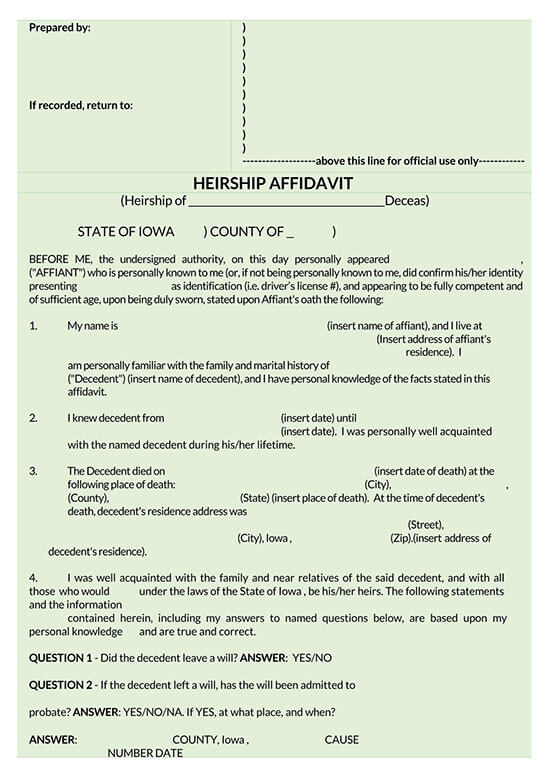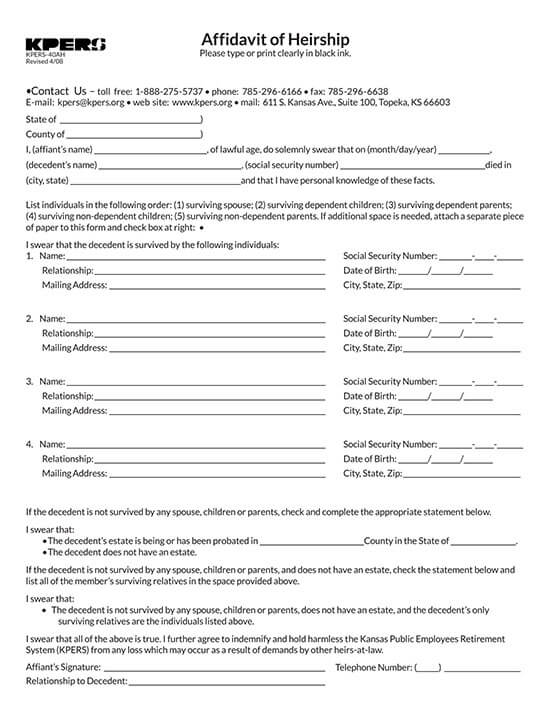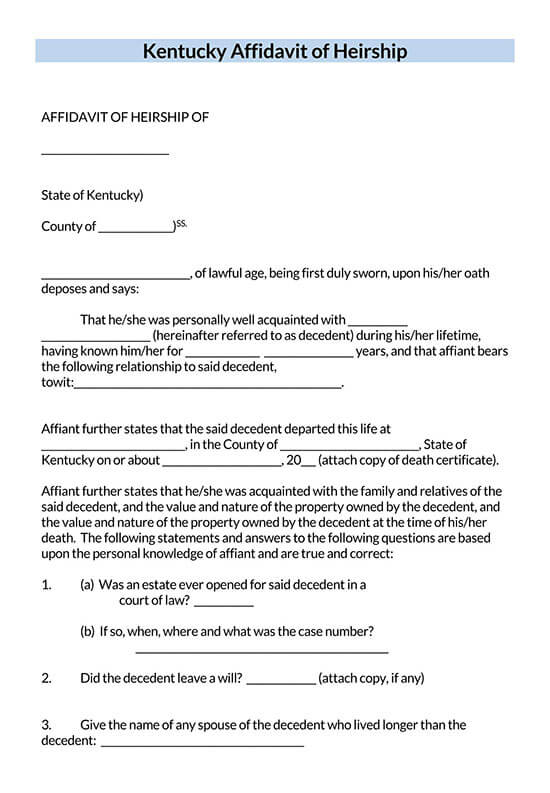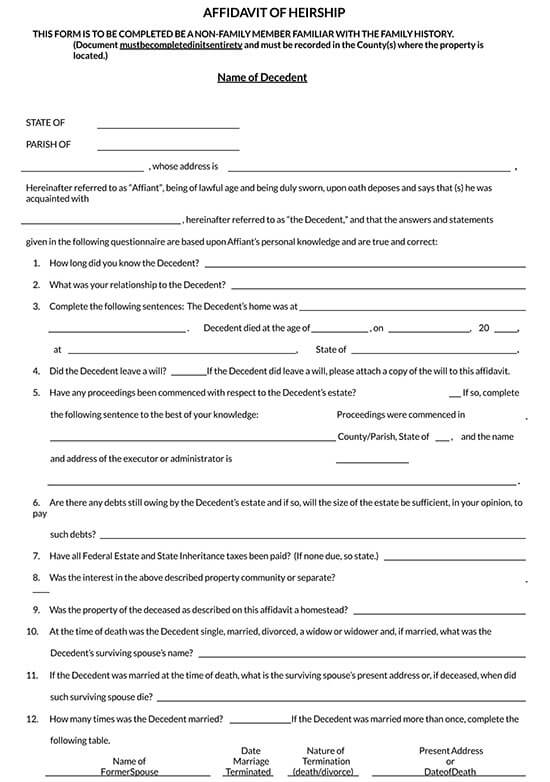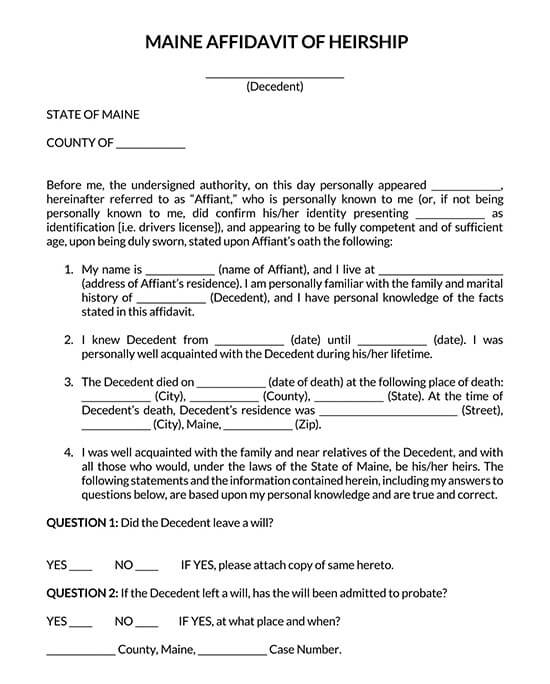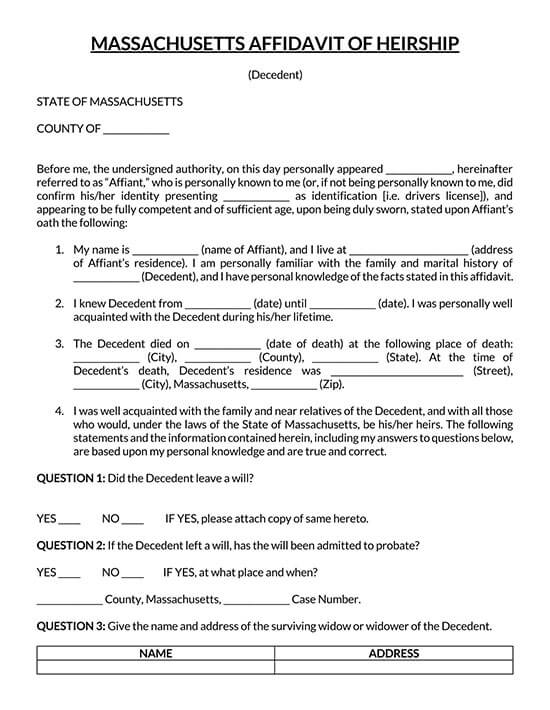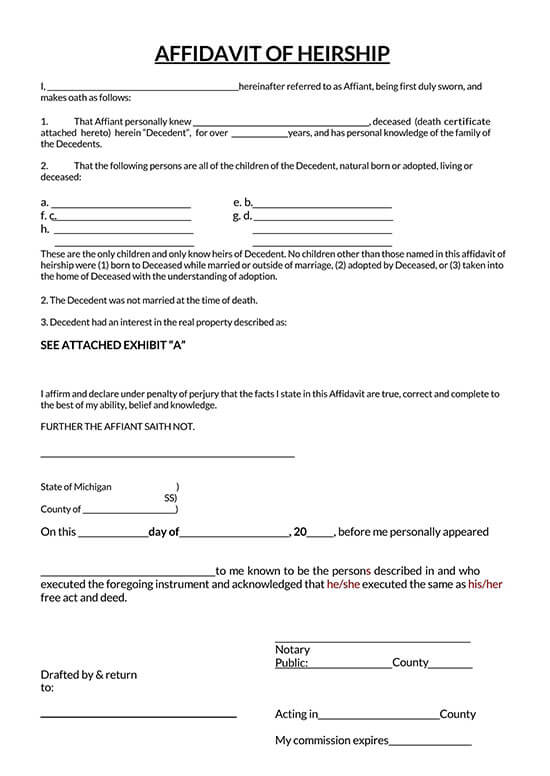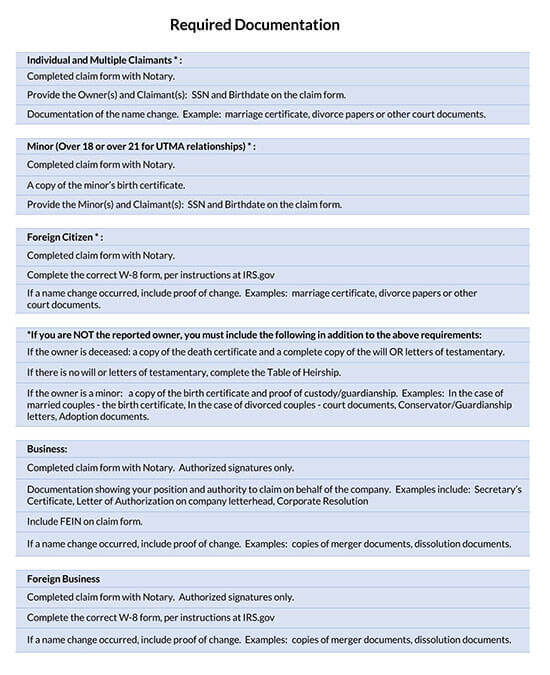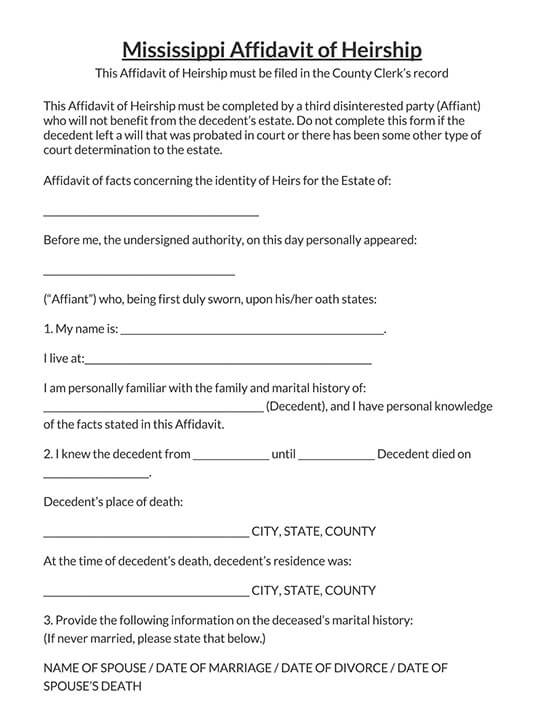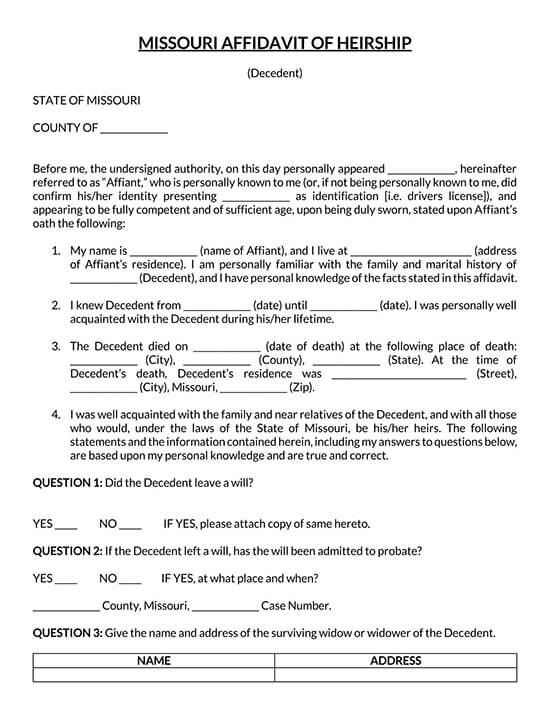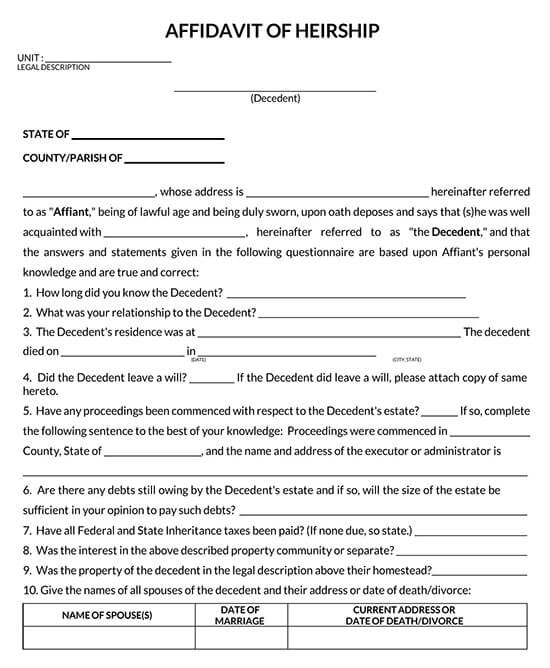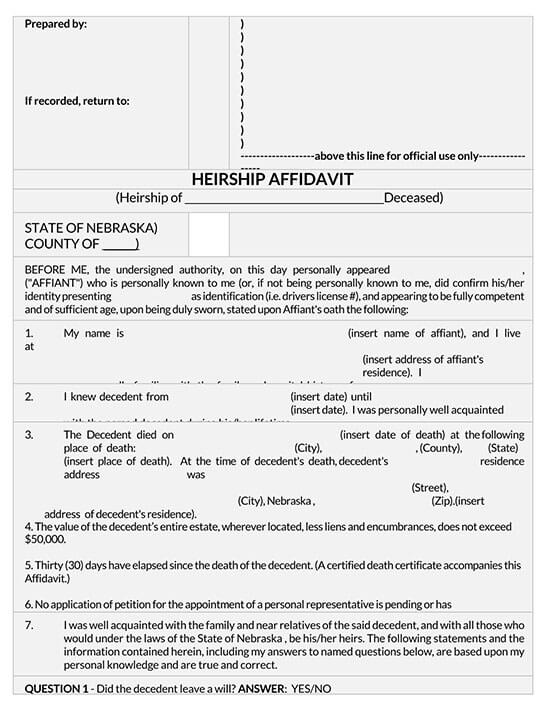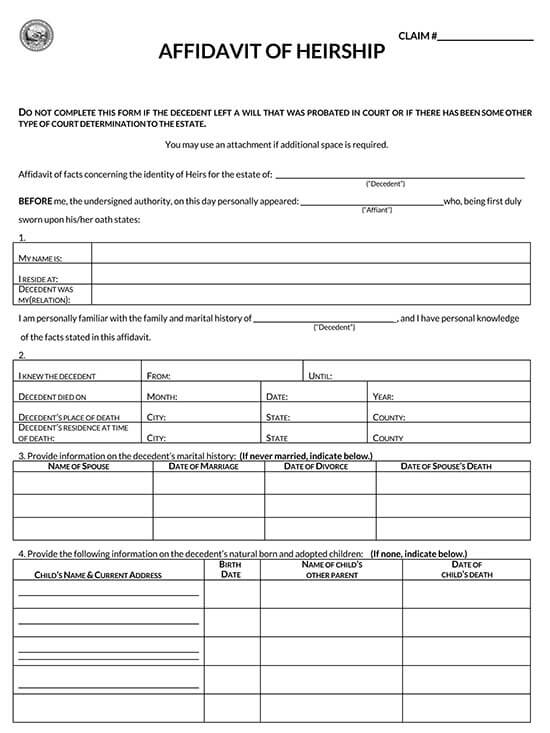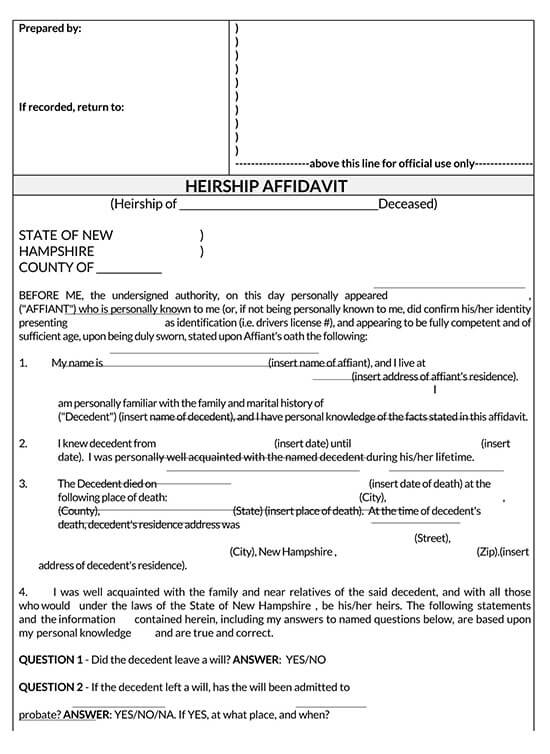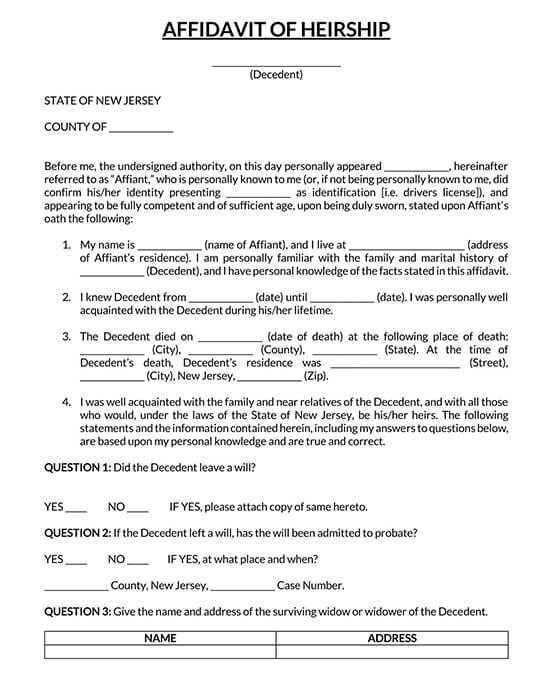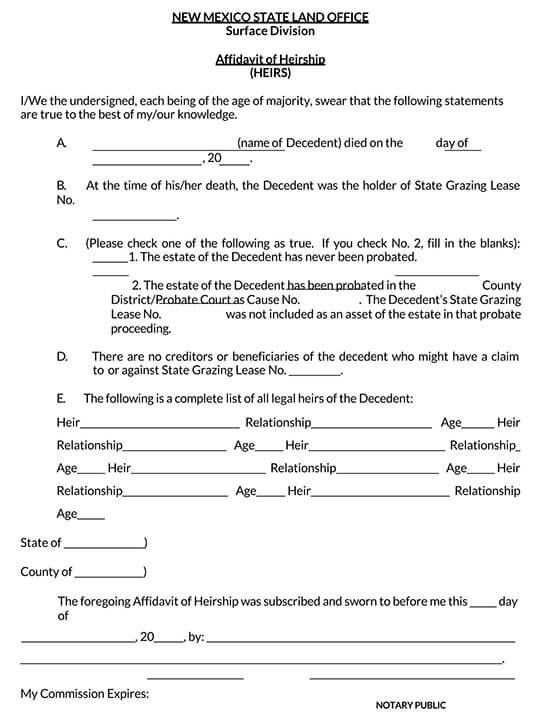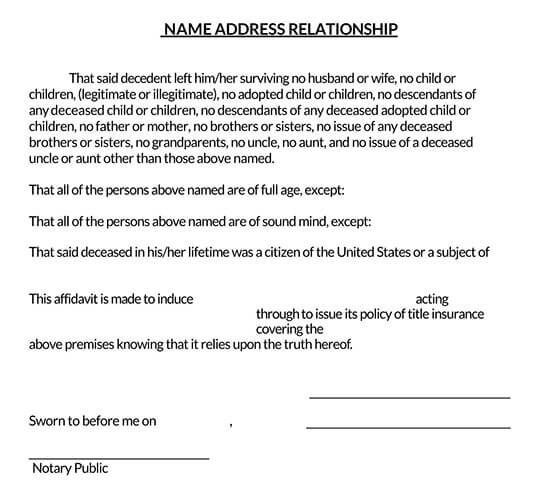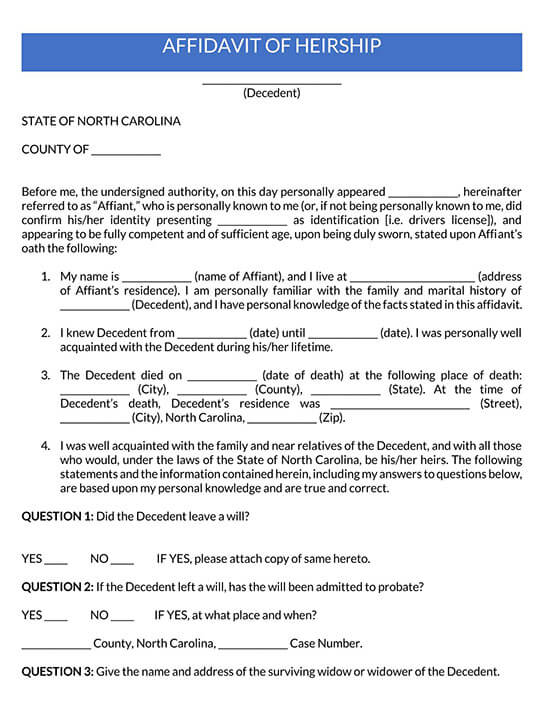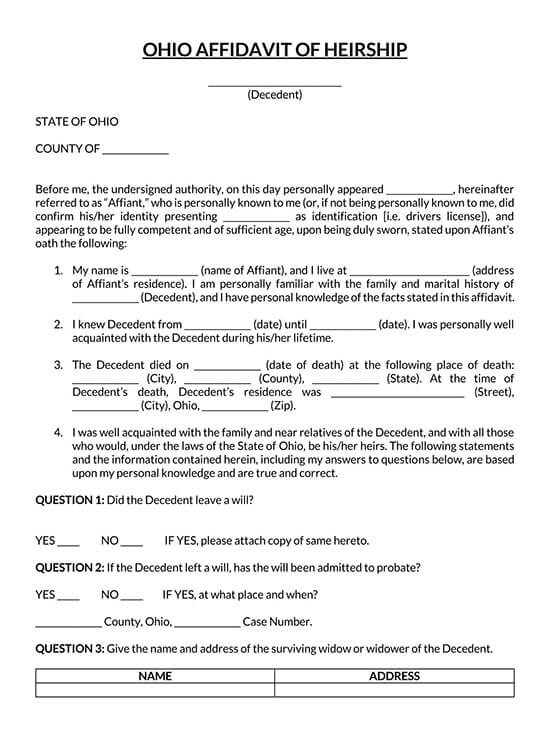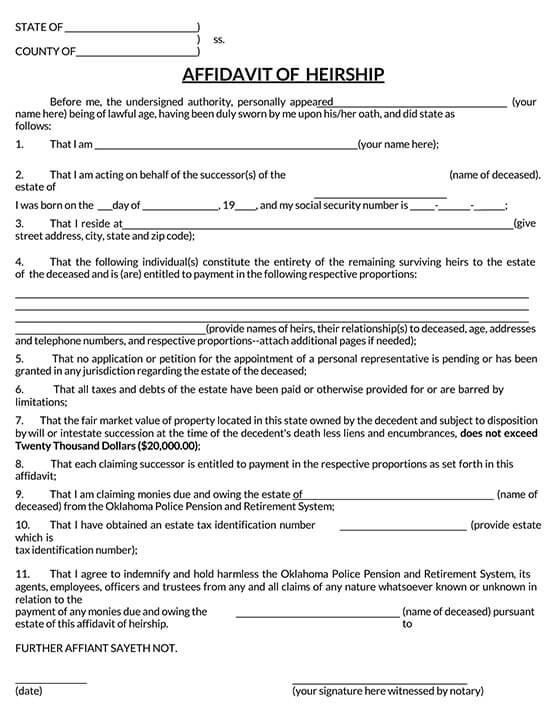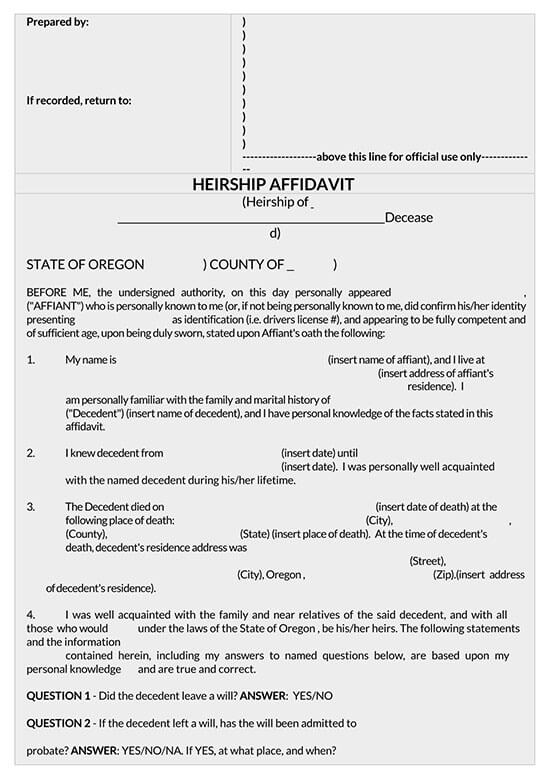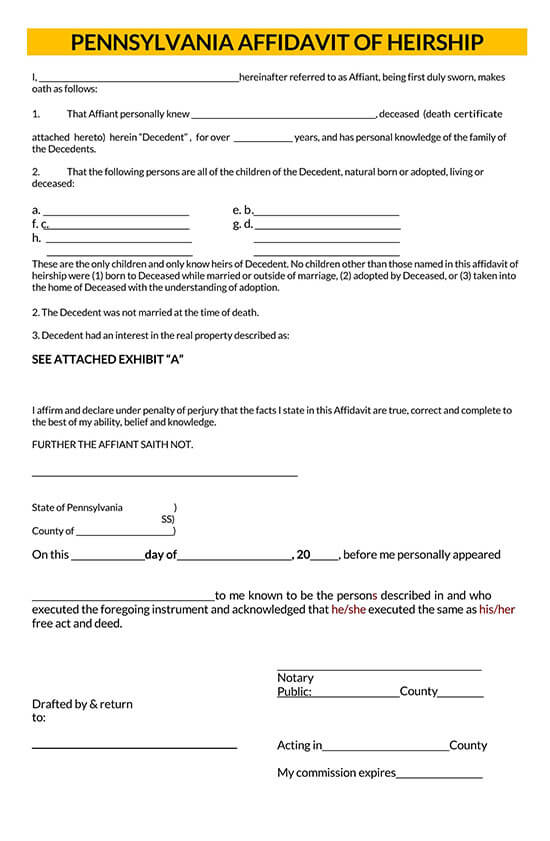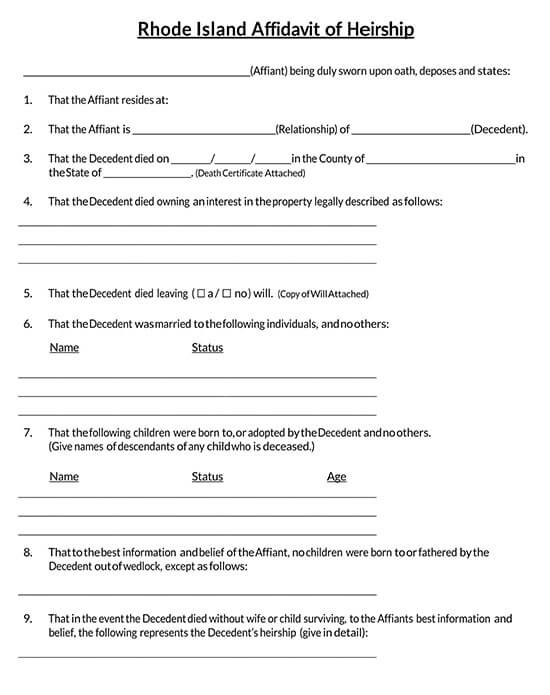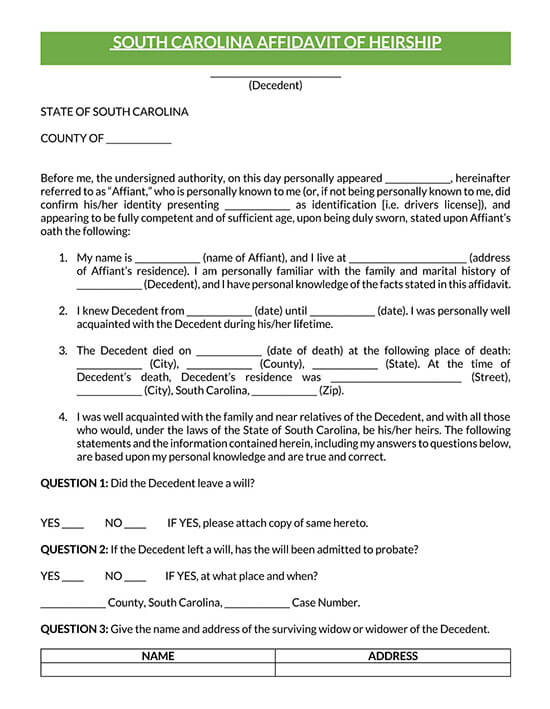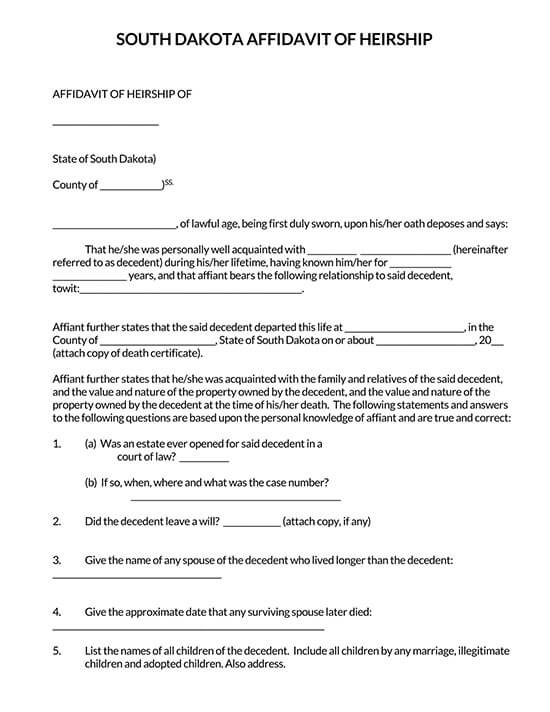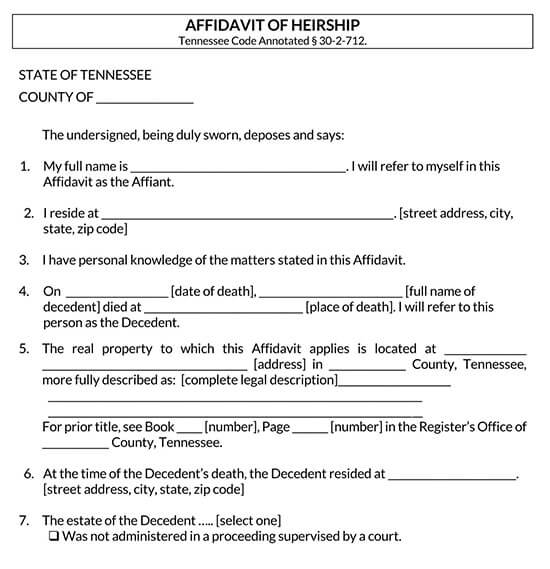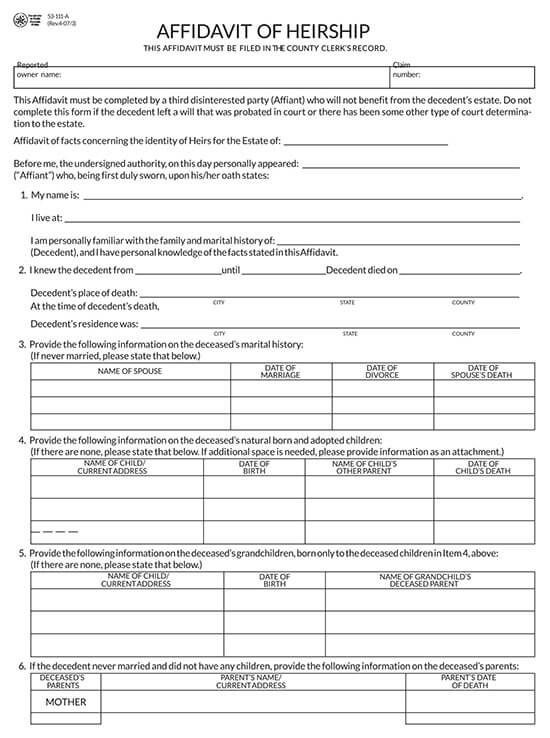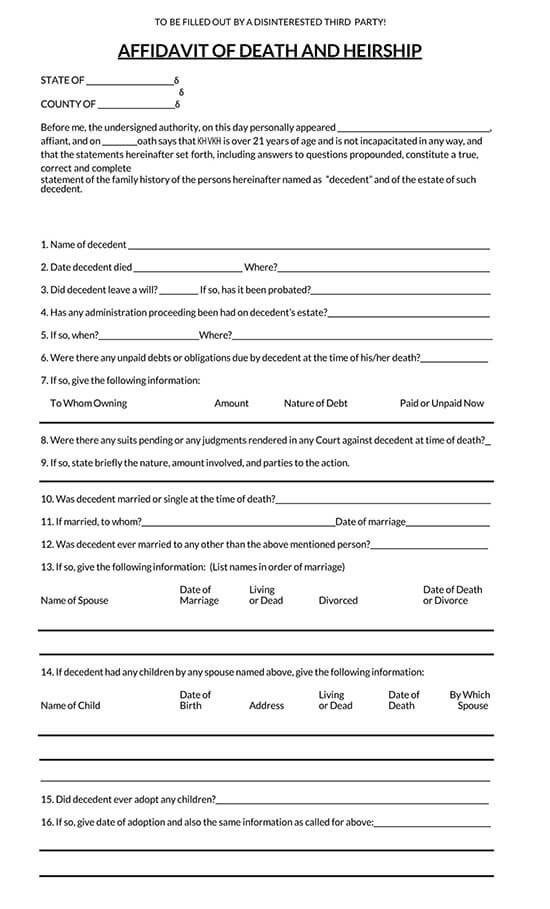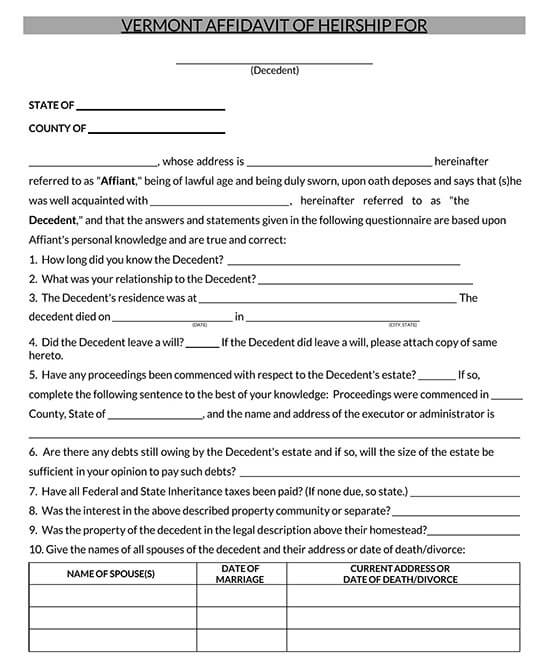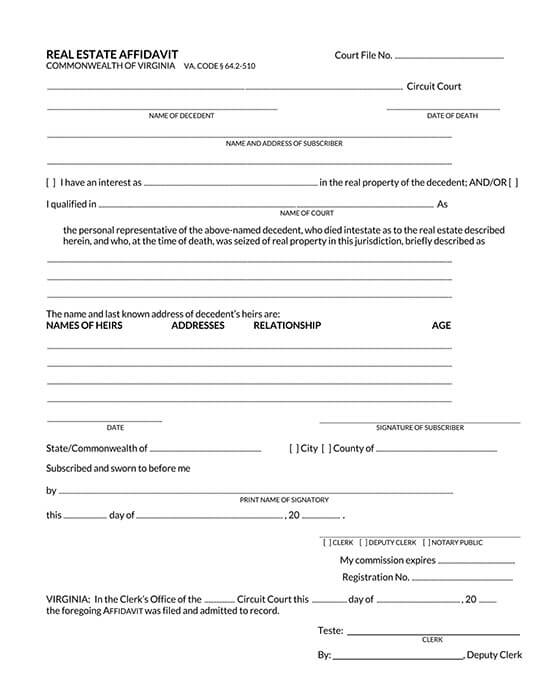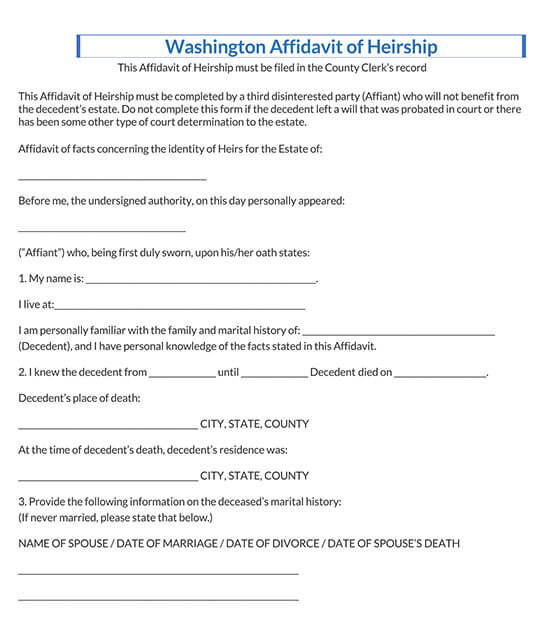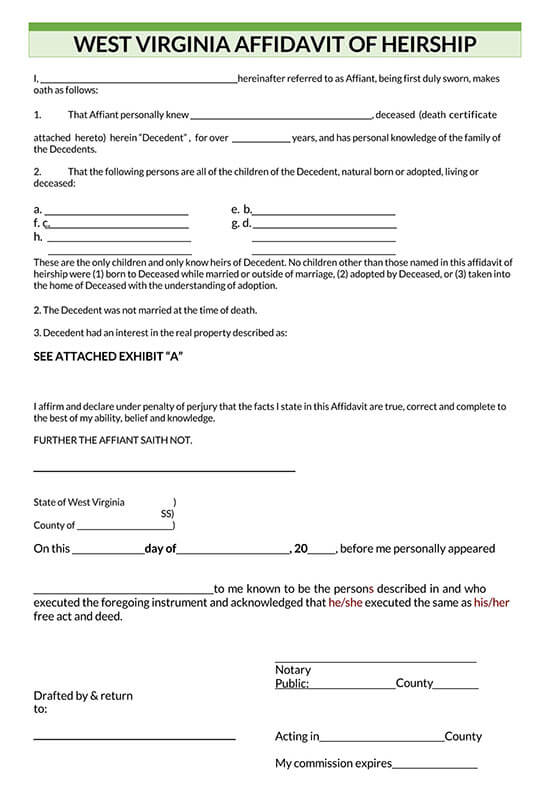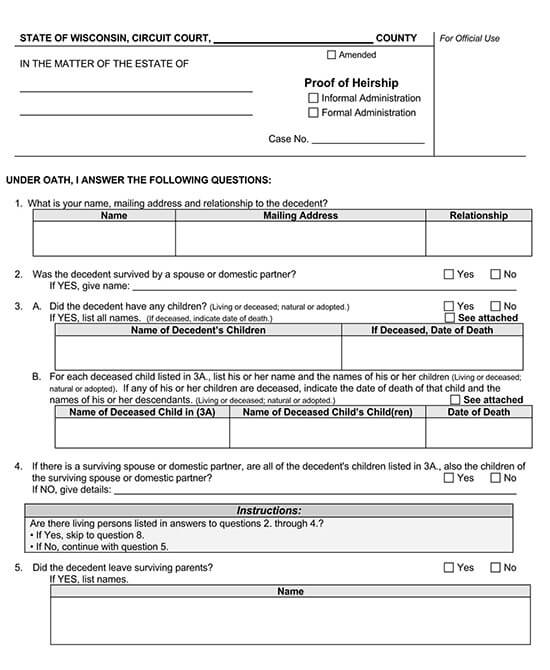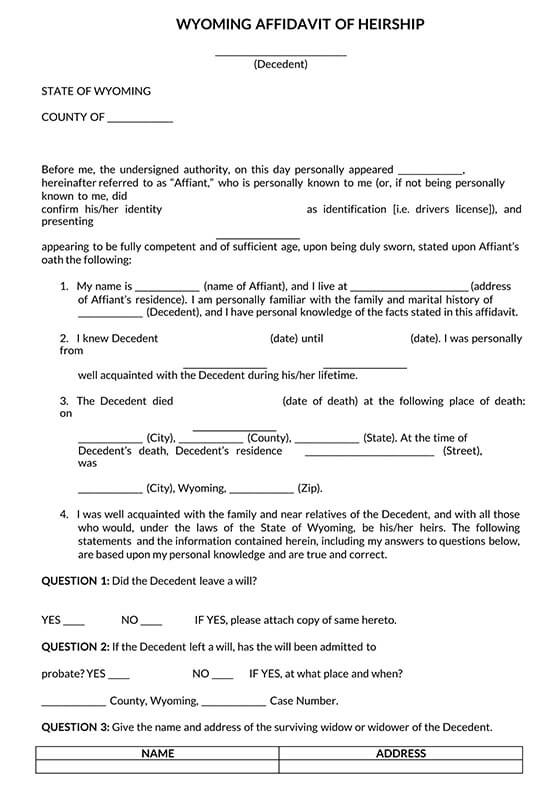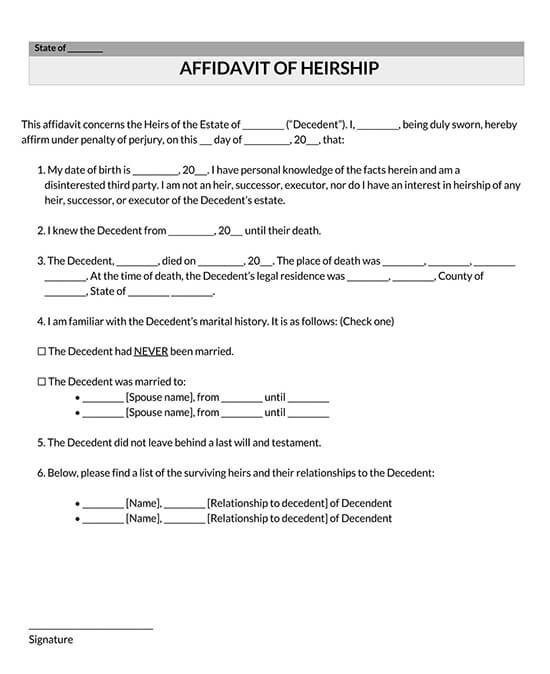Heirship refers to the legal right granted to someone to receive money, real property, or other forms of possessions from someone who has died without leaving a valid will.
Typically, heirs are children, grandchildren, or other relatives of a person who has died (known as the decedent). Usually, spouses do not fall under this category, given that the law entitles them to receive property under provisions of matrimonial property acts.
An affidavit of heirship is used to establish the legitimate heirs of a decedent who dies intestate. Laws regarding heirship, estate probation, and intestacy are usually complicated and perplexing to navigate. For this reason, it is important to obtain information and documents from reputable sites such as this.
What is an Affidavit of Heirship?
An affidavit refers to a written statement signed under oath and usually witnessed by at least one-third party with absolutely no interest in that matter. The document can be produced as evidence in a law court.
An affidavit of heirship refers to a legal document that describes rights to inherit property belonging to someone who has died without leaving behind a valid will and testament.
The document explains the relationship that exists between a deceased family member/ decedent and surviving heirs.
When someone passes on and leaves behind possessions such as real property, the dead person’s interest in that property can be legally transferred to heirs with the help of this document.
Generally, an affidavit of heirship comes in handy when a person passes on without leaving a valid will or when the decedent leaves a will, but it is not probated within four years after death.
When is this Document Used?
As earlier mentioned, an affidavit of heirship is generally used when a person dies without a will. When this happens, a probate court typically starts the process of appraisal and establishment of how that person’s debts and other obligations would be offset. The probate court will also seek ways of distributing the remaining property. The process usually takes a lot of time, and it can be very costly.
An affidavit can speed up this process. In some cases, it can get rid of the whole probate process. Information given in that document is very helpful in enabling the probate court to share out a decedent’s property.
Components of an Affidavit of Heirship
This document is essentially made up of the following elements:
Affiant– this term refers to the person who files that written statement. To be admissible in court, the document should be notarized by an attorney.
Declaration of Relation– all parties whose names and signatures appear on that written statement must state their relationship to the decedent. Ideally, the person who prepares an affidavit of heirship must have no interest in that matter. For this reason, an affiant should not be a blood relative of the deceased. This is to avoid conflict of interest.
Departed– this refers to a person who has passed on without leaving a valid will and whose property ought to be distributed to legitimate heirs.
Signatures– to confirm that information provided in the affidavit is accurate, parties who participate in the preparation of that document must append their signatures on it. Signatures also serve to confirm that those who sign are indeed who they claim to be.
Legal Considerations for an Affidavit of Heirship
Legally, the written statement should be signed and also sworn before an attorney by someone known to the deceased party. That person should also have a proper understanding of the bereaved family history. Ideally, this can be an old friend, a long-term associate, an old family friend, or even a neighbor known to the deceased. It is important to note that this document must be signed by at least two people.
An affidavit should be submitted to the requisite property records office where the decedent’s real property is found. Filing fees generally vary from one legal jurisdiction to another. Once executed, it can also be submitted to a suitable law court. The procedure is fairly straightforward. If you are in doubt, get in touch with the relevant offices or consult an estate attorney.
What are the Consequences of Not Having an Affidavit of Heirship?
In the event that no affidavit of heirship exists, one or more of the following complications may arise:
- Legitimate heirs may be dispossessed of their right to a deceased’s property by unscrupulous people.
- Distribution of property may be contested in court by those who claim to have an interest in the deceased’s property.
- Unknown children of the departed may emerge out of the woods, and this may complicate matters.
- Legitimate heirs may fail to agree on how to share out that property.
The interstate succession process may take a very long time, and this would have significant financial implications.
What Should be Included in an Affidavit of Heirship?
The composition of this written statement generally varies from one legal jurisdiction to another. Typically, it contains the following pieces of information:
- Complete contact information of the affiant. As earlier mentioned, an affiant refers to the apparent heir who submits that document. The contact information may be made up of physical address and mobile phone numbers.
- Accurate information about the decedent. You should include the last known address (physical and telephone numbers). Furthermore, you should provide the name(s) of the deceased’s partner(s) at the point of departure, former spouses (if any), and how to get in touch with them.
- How the affiant is related to that decedent.
- Names of witnesses and potential heirs to the deceased’s property. They should also provide signatures.
Important Terms Used in an Affidavit of Heirship
Decedent– this refers to the person who passes on and leaves behind property as well as heirs who would want to lay claim to that property.
Intestate– this refers to a situation whereby someone dies without leaving behind a valid will. In most cases, this happens when death occurs unexpectedly or prematurely.
Decedent’s estate– these are possessions left behind when someone dies. It may comprise land, buildings, motor vehicles, stocks, livestock, cash, and even intellectual property such as patents and copyrights.
Real property– it is a term that refers to land, buildings, and anything else that is eternally attached to it. It also refers to all ownership rights, such as the right of possessing, deriving enjoyment, selling, or leasing the land and its attachments.
Heirs– these can be defined as people who acquire/ stand to acquire property following the death of another person, guided by rules and regulations of distribution and inheritance. Heirs can be children, grandchildren, nephews, nieces, or any other people who were closely related to the deceased.
Affidavit of Heirship Templates
You may have lost a loved one who, unfortunately, failed to leave behind a valid will. When that person has been laid to rest, and you have finished the mourning process, life must go on. Any property left behind ought to be distributed to the rightful heirs. A well-prepared written statement can play a significant role in this process.
You can download an affidavit of heirship from this website and jump start the process of distributed that property left behind by your grandfather, grandmother, father, or other close relatives.
FAQs
Final Words
When someone you love dies without leaving a valid will behind, sharing the estate left behind can be quite complicated.
Generally, the property may need to undergo a lengthy probate process. The court will have an obligation to identify all the rightful heirs, make sure that all debts are offset, ensure that all claims are determined and that all remaining assets are shared out among heirs. This whole process can be time-consuming and also expensive. To avoid the intervention of courts, why don’t you make use of an affidavit of heirship?
